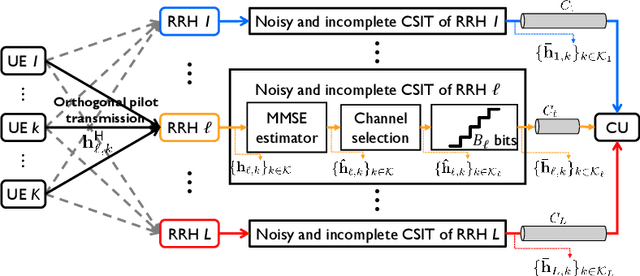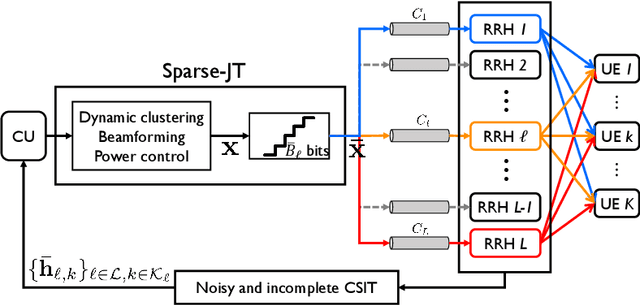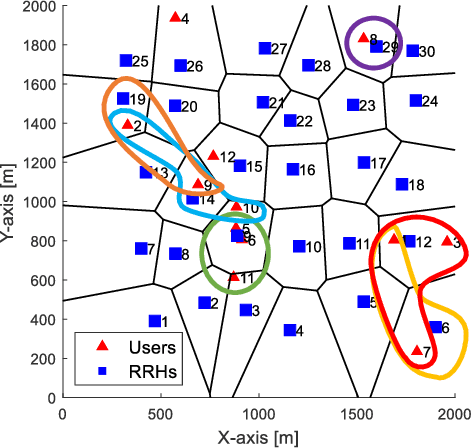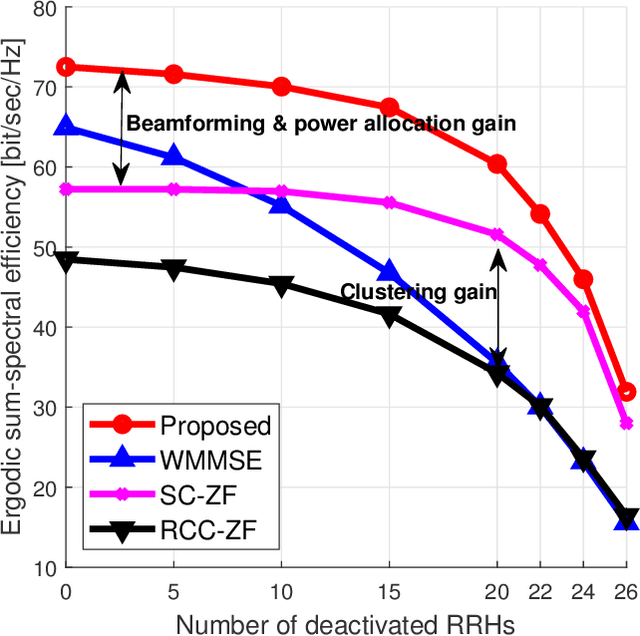Deokhwan Han
FDD Massive MIMO Without CSI Feedback
Feb 09, 2023Abstract:Transmitter channel state information (CSIT) is indispensable for the spectral efficiency gains offered by massive multiple-input multiple-output (MIMO) systems. In a frequency-division-duplexing (FDD) massive MIMO system, CSIT is typically acquired through downlink channel estimation and user feedback, but as the number of antennas increases, the overhead for CSI training and feedback per user grows, leading to a decrease in spectral efficiency. In this paper, we show that, using uplink pilots in FDD, the downlink sum spectral efficiency gain with perfect downlink CSIT is achievable when the number of antennas at a base station is infinite under some mild channel conditions. The key idea showing our result is the mean squared error-optimal downlink channel reconstruction method using uplink pilots, which exploits the geometry reciprocity of uplink and downlink channels. We also present a robust downlink precoding method harnessing the reconstructed channel with the error covariance matrix. Our system-level simulations show that our proposed precoding method can attain comparable sum spectral efficiency to zero-forcing precoding with perfect downlink CSIT, without CSI training and feedback.
Sparse Joint Transmission for Cloud Radio Access Networks with Limited Fronthaul Capacity
Jul 29, 2021



Abstract:A cloud radio access network (C-RAN) is a promising cellular network, wherein densely deployed multi-antenna remote-radio-heads (RRHs) jointly serve many users using the same time-frequency resource. By extremely high signaling overheads for both channel state information (CSI) acquisition and data sharing at a baseband unit (BBU), finding a joint transmission strategy with a significantly reduced signaling overhead is indispensable to achieve the cooperation gain in practical C-RANs. In this paper, we present a novel sparse joint transmission (sparse-JT) method for C-RANs, where the number of transmit antennas per unit area is much larger than the active downlink user density. Considering the effects of noisy-and-incomplete CSI and the quantization errors in data sharing by a finite-rate fronthaul capacity, the key innovation of sparse-JT is to find a joint solution for cooperative RRH clusters, beamforming vectors, and power allocation to maximize a lower bound of the sum-spectral efficiency under the sparsity constraint of active RRHs. To find such a solution, we present a computationally efficient algorithm that guarantees to find a local-optimal solution for a relaxed sum-spectral efficiency maximization problem. By system-level simulations, we exhibit that sparse-JT provides significant gains in ergodic spectral efficiencies compared to existing joint transmissions.
 Add to Chrome
Add to Chrome Add to Firefox
Add to Firefox Add to Edge
Add to Edge